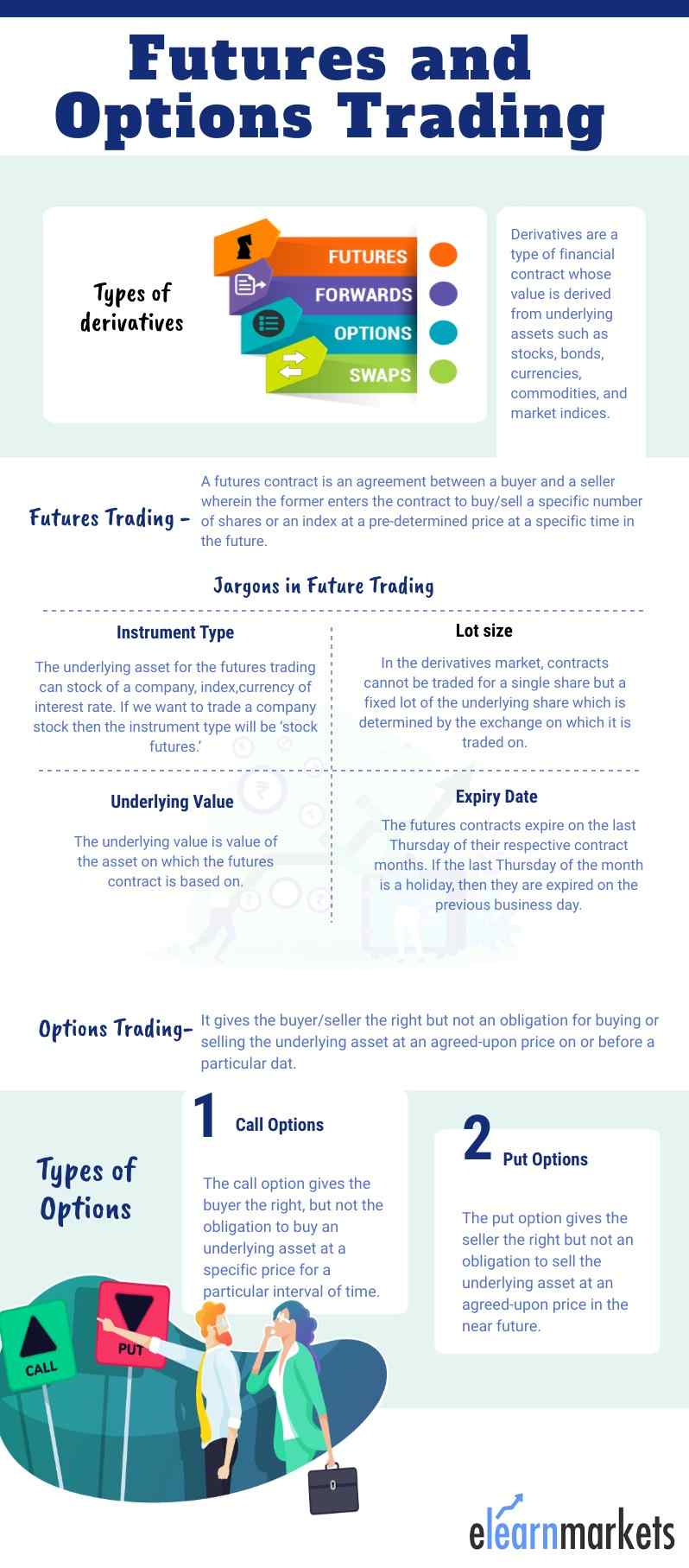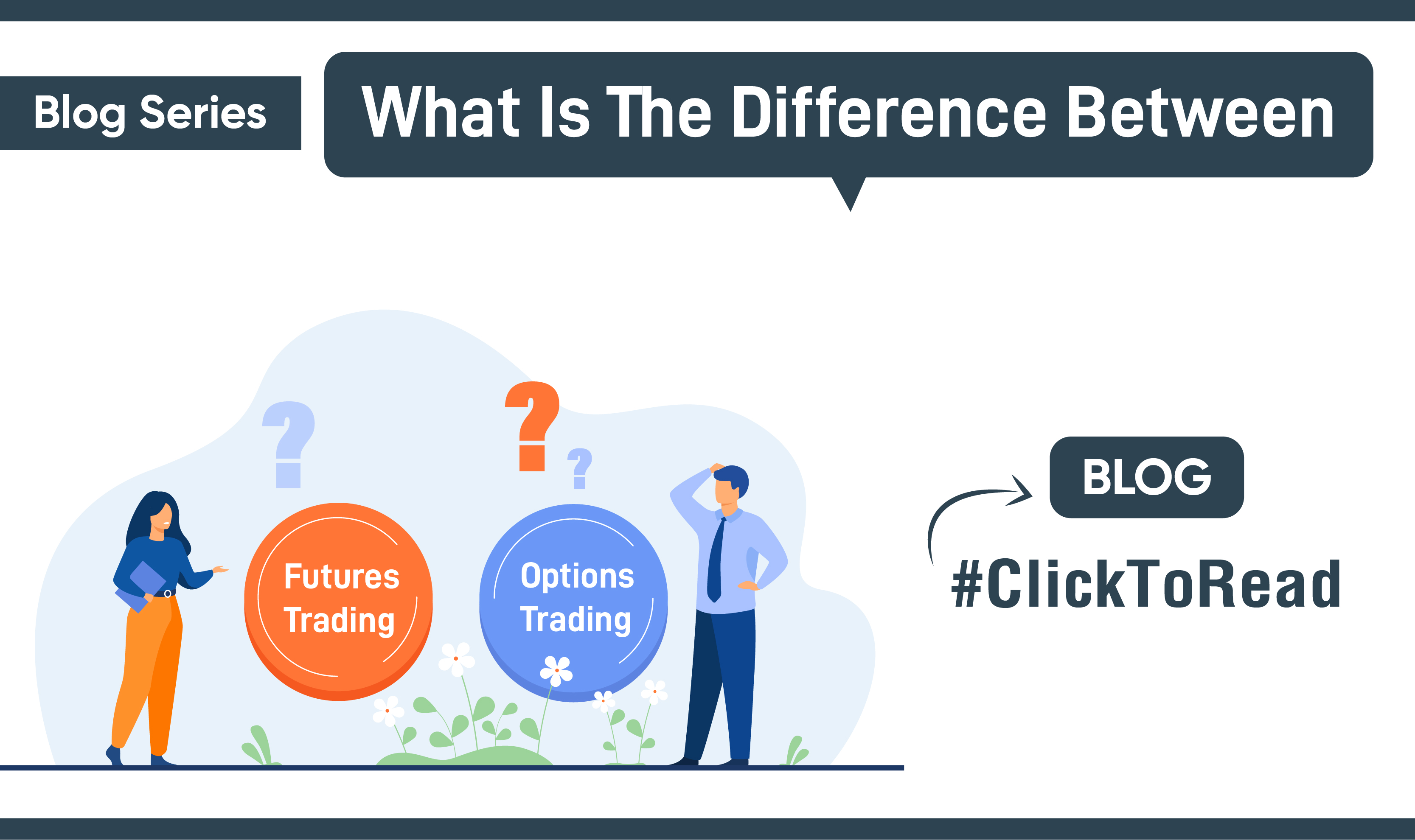Introduction
Have you ever wondered how the stock market works? Futures and options trading are two powerful tools that allow investors to speculate on the future price of commodities, stocks, or currencies. Whether you’re an experienced trader or just starting to explore the world of finance, this comprehensive guide will provide you with a solid understanding of these complex yet rewarding trading strategies.

Image: www.pinterest.com
What Are Futures and Options?
**Futures** are standardized contracts that obligate the buyer to purchase or the seller to deliver a specific quantity of an underlying asset at a predetermined price on a future date. In essence, they provide a way to lock in today’s price for a future transaction.
**Options** grant the buyer the right, but not the obligation, to buy or sell an underlying asset at a specific price within a specified period. They offer flexibility and leverage, allowing traders to capitalize on market movements without owning the underlying asset outright.
A History of Futures and Options
The origins of futures trading can be traced back to 17th century Japan, where farmers used rice futures to manage risk and ensure a stable income. Modern futures exchanges emerged in the 19th century with the establishment of the Chicago Board of Trade and the CME Group.
Options, on the other hand, gained prominence in the 20th century. The first standardized options exchange, the Chicago Board Options Exchange (CBOE), was founded in 1973. Today, futures and options are traded worldwide, providing investors with a versatile tool for risk management, speculation, and hedging.
Types of Futures and Options Trading
Futures and options contracts are available for a wide range of underlying assets, including:
- Commodities (e.g., gold, oil)
- Stocks
- Indices
- Currencies
- Interest rates
Each contract has unique characteristics, such as contract size, expiration date, and tick size, which determine the trading strategies and risks involved.

Image: blog.elearnmarkets.com
Trading Futures and Options: How It Works
Trading futures and options requires an account with a broker authorized to offer these instruments. Once an account is established, traders can enter into contracts by buying or selling them through an electronic platform or over the phone. The profit or loss on a trade is determined by the difference between the contract price and the settlement price at the expiration date.
Options provide traders with greater flexibility through the use of call and put options. Call options give the buyer the right to buy the underlying asset, while put options give the right to sell. Traders can choose from a range of strike prices, which determine the price at which the option can be exercised.
Tips and Expert Advice for Trading Futures and Options
Successful futures and options trading requires a combination of knowledge, skill, and risk management:
- Manage Risk: Use stop-loss orders, position sizing, and hedging strategies to control your risk and protect your capital.
- Limit Leverage: While futures and options can provide leverage, use it wisely. Excessive leverage can amplify both profits and losses.
- Understand the Underlying Asset: Thoroughly research and understand the fundamentals of the underlying asset you’re trading.
- Set Realistic Goals: Don’t expect to get rich quick. Futures and options trading requires patience, discipline, and a long-term perspective.
- Seek Professional Guidance: Don’t hesitate to consult with financial advisors or brokers for guidance and support. They can help you navigate the complexities of futures and options trading.
FAQs on Futures and Options Trading
Q: What’s the difference between futures and options?
A: Futures contracts obligate the holder to buy or sell the underlying asset, while options give the right but not the obligation.
Q: What are the risks involved in futures and options trading?
A: The potential for profit comes with commensurate risks, including the possibility of losing more than your initial investment.
Q: Do I need a lot of capital to trade futures and options?
A: While margins can reduce the upfront capital required, futures and options trading still require a substantial amount of capital to trade effectively.
Futures And Options Trading Explained

Image: www.indiratrade.com
Conclusion
Futures and options trading empower investors with the tools to manage risk, speculate on future price movements, and hedge their positions. However, it’s crucial to approach these instruments with a solid understanding of the underlying dynamics, risk tolerance, and a commitment to continuous learning. Remember, the financial markets are constantly evolving, and the ability to adapt and stay informed is key to successful trading. Are you ready to delve into the fascinating world of futures and options trading?






